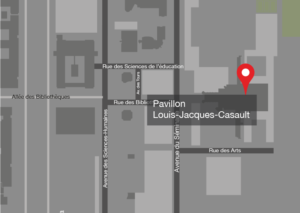Smart and green buildings for sustainable cities
Source : Réseaux de centres d'excellenceProgramme : Réseau IC-Impacts
Période : 2016-2019
Chercheur(s) du centre impliqué(s):
- Mir Abolfazl Mostafavi
Research on sustainable building infrastructure has focused on energy use associated with construction materials and methods, and during operations. The latter has received particular attention in smart building research where a sensor network is used to provide continuous feedback about indoor environmental conditions to HVAC and lighting systems to minimize electrical demand. This approach is inadequate. Energy demand assessment in urban areas must be done at the scale of urban districts and neighborhoods, not just individual buildings. This is important because the Urban Heat Island (UHI) effect has a major impact on building energy efficiency. With rapid urbanization, UHI intensity in urban and peri-urban areas will only increase. The proposed research aims to understand the relationship between UHI intensity and building energy demands, two aspects which have not previously been studied together, using real world quantitative data. Using open source hardware-software platforms, we will build and deploy a low-cost sensor network for UHI mapping and indoor temperature-humidity mapping. The network will provide data about UHI variability within limited geographic areas. This data will be used together with information on conditions external to the building physical parameters such as built densities, and volumetric and constructive characteristics of buildings, and functional characteristics such as land use to develop a model linking UHI intensity and urban morphology. University campuses will serve as test beds representing urban areas. We propose to determine the energy demand of individual buildings and study the UHI effect at three campuses in India and two in Canada, each representing a different urban configuration. Comparison with macro-scale data from satellite observations will allow expansion of the model to urban areas beyond the study sites.



